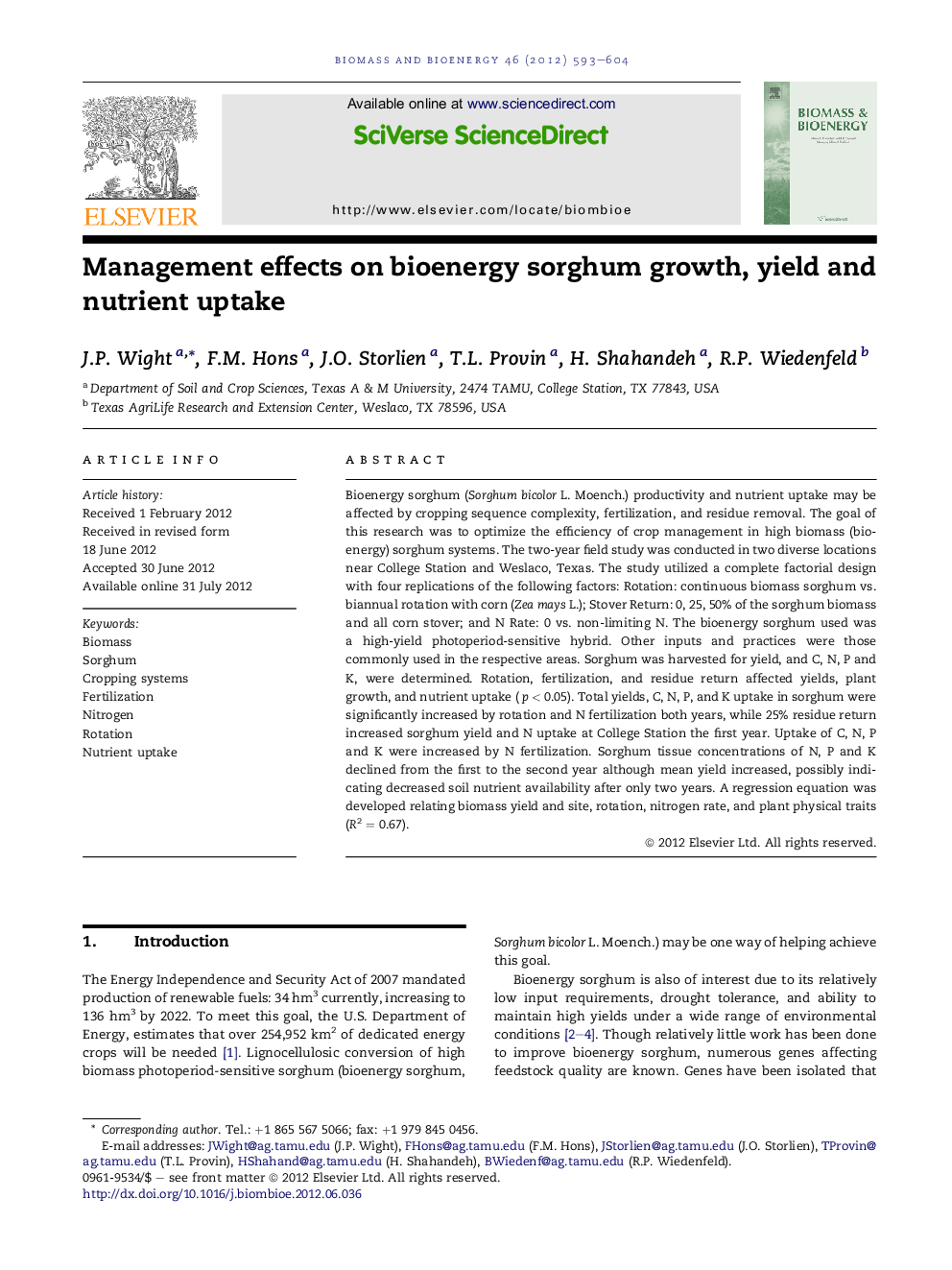| Article ID | Journal | Published Year | Pages | File Type |
|---|---|---|---|---|
| 677193 | Biomass and Bioenergy | 2012 | 12 Pages |
Bioenergy sorghum (Sorghum bicolor L. Moench.) productivity and nutrient uptake may be affected by cropping sequence complexity, fertilization, and residue removal. The goal of this research was to optimize the efficiency of crop management in high biomass (bioenergy) sorghum systems. The two-year field study was conducted in two diverse locations near College Station and Weslaco, Texas. The study utilized a complete factorial design with four replications of the following factors: Rotation: continuous biomass sorghum vs. biannual rotation with corn (Zea mays L.); Stover Return: 0, 25, 50% of the sorghum biomass and all corn stover; and N Rate: 0 vs. non-limiting N. The bioenergy sorghum used was a high-yield photoperiod-sensitive hybrid. Other inputs and practices were those commonly used in the respective areas. Sorghum was harvested for yield, and C, N, P and K, were determined. Rotation, fertilization, and residue return affected yields, plant growth, and nutrient uptake (p < 0.05). Total yields, C, N, P, and K uptake in sorghum were significantly increased by rotation and N fertilization both years, while 25% residue return increased sorghum yield and N uptake at College Station the first year. Uptake of C, N, P and K were increased by N fertilization. Sorghum tissue concentrations of N, P and K declined from the first to the second year although mean yield increased, possibly indicating decreased soil nutrient availability after only two years. A regression equation was developed relating biomass yield and site, rotation, nitrogen rate, and plant physical traits (R2 = 0.67).
► Biomass sorghum dry yields exceeded 25 t ha y−1 in optimized systems. ► Rotation affected sorghum yield, and may be important for maintaining productivity. ► Over two years, sorghum yields were generally insensitive to biomass return. ► Regression of management, N rate and plant traits explained 67% of yield variation. ► High amounts of N, P and K removed by harvest may limit long-term yields.
